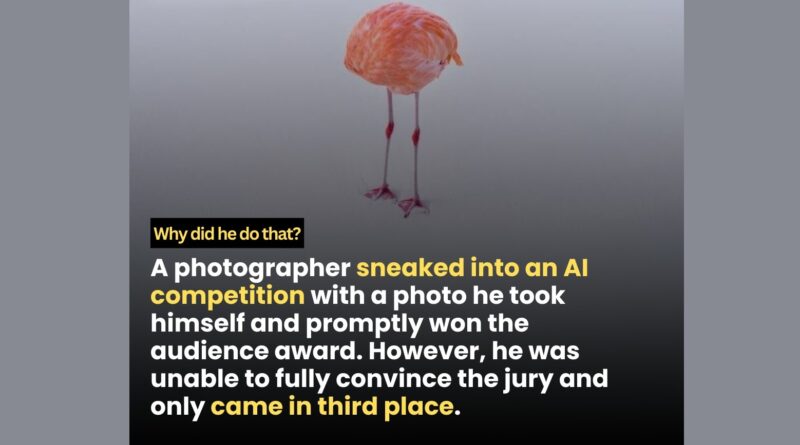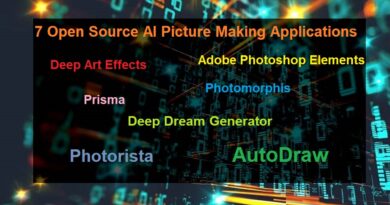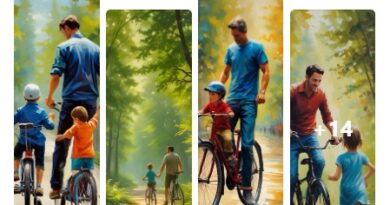A Photographer’s Sneaky Win in an AI Competition
A photographer sneaked into an AI competition with a photo he took himself and promptly won the audience award. however he was unable to fully convince the jury and only came in third place
Miles Astray competed in the 1839 Awards which is the oldest annual AI competition and also features AI-produced photographs in another category. The winners were selected by a rich and diverse jury that included members from the New York Time, Getty Images, the Centre Pompidou in Paris and Christie’s.
Astray’s submission for the contest was “Flamingone” where a flamingo sits on the background of a Caribbean beach at Aruba concealing its head with its body. This makes it come as if the flamingo has no head – which only helps fuel the argument that an AI was at work here.
The photograph was made with Nikon D750 in 2022, so with its help, the audience was convinced and the photograph received the audience award. “Flamingone” did not succeed to impress the expert jury and it got only a third place.
Ai art competition
“Join our AI Art Competition and showcase your creativity! Submit your AI-generated artwork for a chance to win exciting prizes. Open to all artists and tech enthusiasts. Enter now and be part of the future of digital art!”
A Photographer’s Secret Triumph over AI competition
Introduction
Artificial Intelligence, commonly referred to as AI competition has AI been embraced across the globe and is seen as the future. Photography is one of the industries where AI technology has found its footing. However, in a recent AI photography competition, one photographer secretly inserted himself into the picture and created quite a stir.
The Controversial Win
This photo contest was initiated by a prominent AI firm and drew photographers from around the globe. The participants were supposed to bring their favorite photos made with the help of AI technology. This jury was composed of industry professionals and was in charge of determining the winners of the competition.
This time one of the photos caught my attention the most. It was a great picture of an urban area at night with great colors and perfect framing. The photographer sent the picture to the contest under the nickname “AI Photographer” and did not provide any information about the camera and the editor that was used.
Within the blink of an eye the photo became the center of attention and was considered the winner. But when it goes to the jury’s decision, the photo only ranked third. This created a lot of stir among the audience since they thought that the jury had made a mistake.
The Sneaky Truth
It was later discovered that the “AI Photographer” was in reality an actual photographer who entered the competition with a photo that he personally took. He had further applied AI technology to increase the color contrast to make the photo as aesthetic as possible.
This created doubts on the validity of the competition and the application of artificial intelligence in photography.
The jury, on the other hand, claimed that the photo did not fit the requirements of the competition because AI technology was used to capture and edit the photo. To them, the photographer had only augmented the AI in an attempt to make a good photo even better.
The Integration of AI in Photography
Some controversy rose from the winning photo to debate the use of AI artificial intelligence in photography. Some of them simply stated that AI is a mere technology which should not be used to award the winners of a photography contest. Some felt that AI has transformed the industry and should be awarded more attention.
Still, it is apparent that the use of AI has shifted the future of photography in the contemporary world. It has changed the way photographers work, in editing and post-production as well as in the methods and techniques used in composition. It has also made photography more available to the general public by having their smartphones with built-in AI camera.
Artificial Intelligence in the Future of Photography
Consequently, with a growth of the AI technology, the significance of the AI application in the sphere of photography will increase. Thanks to AI, people particularly photographers are in a position to produce great photos within a short span and the result is amazing. However, it is necessary to emphasize that AI is not a substitute for creativity and vision of the photographer.
While the winning photo created some debate, the focus it brought on AI was informative about the technology’s usefulness in photography. Now it remains for the industry to determine what ammount of work is better to leave to AI and what part should be done by a photographer.
The Rise of AI in Photography Competitions
The recent AI expo for national competitiveness has highlighted the growing role of artificial intelligence in various fields, including photography competitions. AI competition entries have seen immense growth, transforming the landscape of these contests. With AI art competition becoming a regular feature, the question arises: Can human photographers still AI triumph over machines that learn and adapt at an unprecedented rate?
AI’s Stunning Capabilities
AI in photography has advanced significantly. Algorithms can now analyze thousands of images, recognize patterns, and even create art that mimics human creativity. This has led to a surge in AI art competition submissions that often leave audiences in awe with their precision and innovation.
The Human Element
Despite technological advancements, human photographers bring something irreplaceable to the table—emotion, intention, and a personal connection to their subjects. The unique ability to capture moments that resonate on a deeply human level often sets human photographers apart in any open AI competition.
Case Studies of Triumph
Numerous instances exist where human photographers have triumphed over AI. For example, during the recent AI expo for national competitiveness, a photograph by a human artist won the grand prize. The image captured the raw emotion and complexity of the human condition, something no machine has yet to replicate fully.
Understanding AI Art Competitions
AI expo for national competitiveness events have captured global attention, drawing a myriad of AI enthusiasts and professionals to showcase their innovations. These expos often include an AI competition segment, where creators submit their AI-generated art. An AI art competition highlights the prowess of modern algorithms in producing visually stunning pieces.
However, amidst the parade of technological marvels, the open AI competition scene has seen a unique phenomenon—the triumph of human photographers over AI. At the heart of an AI expo for national competitiveness, the clash between human creativity and machine-generated art often takes center stage. Human photographers, with their keen eyes for detail and emotional depth, continue to amaze audiences and judges alike, even when pitted against sophisticated AI models.
This recurring human triumph in the AI art competition realm raises an intriguing point: despite AI’s rapid advancements, the human touch remains irreplaceable. One notable aspect of AI competition is the criteria by which artworks are judged. While AI can generate technically flawless images, human-created art often resonates on a deeper emotional level. Judges at an open AI competition frequently find themselves drawn to the subtleties and narratives woven into human photographs, something AI often struggles to replicate authentically
. Furthermore, the narrative of a human photographer winning in an AI art competition serves as a testament to the enduring power of human creativity. It underscores the importance of preserving and celebrating human artistry, even as we embrace AI’s capabilities. In conclusion, the AI expo for national competitiveness serves not just as a platform for AI innovation but also as an arena where human talent shines brightly. The consistent success of photographers in these competitions highlights a significant aspect of the art world: while AI can enhance and expand our creative horizons, it is the human touch that continues to captivate and inspire.
The Unique Value of Human Creativity
In arenas like the AI Expo for National Competitiveness, human ingenuity continues to shine despite the rapid advancements in artificial intelligence. While AI competes in various fields, human photographers are eloquently illustrating that their craft remains unparalleled, even amidst an AI competition landscape.
Intrinsic Human Connection
One of the most significant aspects distinguishing human creativity from AI-generated content is the intrinsic connection humans have with their subjects. Storytelling Beyond Pixels
A human photographer’s ability to weave a story through their lens goes beyond mere technical execution. During open AI competitions, where AI systems are judged by their ability to mimic human creativity, the narratives crafted by human photographers still stand out. The interplay of light, shadow, and subject in a photograph often conveys a powerful story that resonates deeply with viewers, a feat challenging for AI to replicate fully.
Adapting with Intuition
The flexibility and intuition that human photographers demonstrate are further testaments to their unique value. In dynamic and unpredictable environments, human creativity shines as photographers adapt to changing conditions instantaneously. This adaptability is less prevalent in AI systems, which rely heavily on pre-programmed algorithms and datasets.
Personal Touch in Creation
The personalized touch in every photograph taken by a human is a reflection of the photographer’s personal experiences, perspectives, and emotions. This authenticity is difficult for AI to emulate, even in high-stakes AI competitions. The personal investment and emotional resonance provided by human photographers continue to captivate audiences and judges alike.
Case Studies: Photographers Triumphing Over AI
At the recent AI Expo for National Competitiveness, human photographers demonstrated their unique edge over AI-generated art. This event highlighted the ongoing AI competition and showcased the irreplaceable value of human creativity and intuition in photography.
Winning Against AI in Art Competitions
In an era where AI art competition is becoming increasingly popular, photographers are finding innovative ways to maintain their relevance. The AI Expo for National Competitiveness served as a platform for these artists to display their distinct style and emotional depth, which AI struggles to replicate.
Human Creativity vs. Machine Learning
human photographers bring personal experiences and emotional connections to their work. This distinction was evident in the entries submitted for the open AI competition.
Case Study: Emotional Engagement
A notable example from the AI Expo for National Competitiveness was a photographer who captured the essence of a community event. The emotional engagement and narrative storytelling in the photograph were praised, something AI-generated art struggles to achieve. This case study underscores the unique advantage human photographers hold in AI art competitions.
Ai competition ubm
“Participate in the UBM AI Competition and demonstrate your innovative skills! Compete with cutting-edge AI solutions and gain recognition in the tech community. Win exciting prizes and showcase your expertise. Enter now!”




